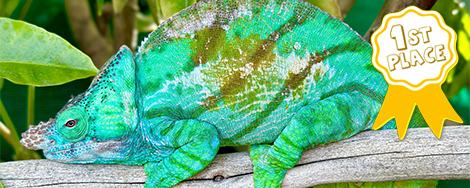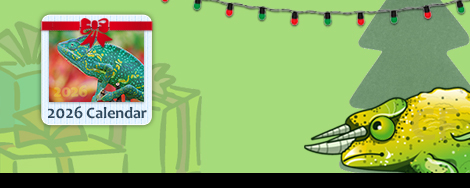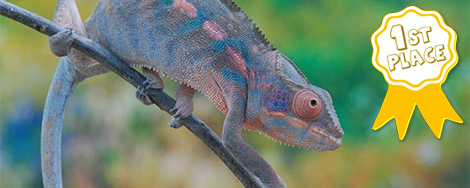Navigation
Install the app
How to install the app on iOS
Follow along with the video below to see how to install our site as a web app on your home screen.
Note: This feature may not be available in some browsers.
More options
You are using an out of date browser. It may not display this or other websites correctly.
You should upgrade or use an alternative browser.
You should upgrade or use an alternative browser.
Home Page
Recent Discussions
- Replies
- 6
- Views
- 28
- Replies
- 0
- Views
- 4
- Replies
- 37
- Views
- 3K
Did You Know?
Chameleons have laterally compressed bodies. This enables them to warm up quickly by presenting a larger surface area to the sun. It also helps some chameleon species blend in among the similarly shaped leaves in their environment.
The word Calumma comes from the Latin word for covering. This genus consists of chameleons from Madagascar with occipital lobes.
The horns on a chameleon are made up of ringlike segments of inner bone covered by a hard keratin-like skin.
Chameleon fossils have been found in central Europe and China, indicating they were once much more widespread than they are now.
True chameleons include the following genera: Archaius, Bradypodion, Brookesia, Calumma, Chamaeleo, Furcifer, Kinyongia, Nadzikambia, Palleon, Rhampholeon, Rieppeleon and Trioceros.
The word Bradypodion comes from the latin “bradus podos” or slow foot.
The largest chameleon species by weight is Calumma parsonii (Parson’s Chameleon).
Some chameleons play dead to avoid predation; this is called thanatosis.
The word Rieppeleon is named after the scientist Olivier Rieppel.
There are currently 202 recognized chameleon species and 85 of them are found on the island of Madagascar.
We love our sponsors
- Chameleons Only
- Mist King
- Tortoise Supply
- Great Lakes Hornworm
- LLLReptile
- Mulberry Farms
- Chameleon Paradise
- Coastal Silkworms
- Dubia Roaches
- Dragon Strand
- Chamelicious Chameleons
- Full Throttle Feeders
- Gulf Coast Silkworms
- Chromatic Chameleons
- Sticky Tongue Farms
- The Critter Depot
- Mantis Place
- Rebecca Wang Art
- iPardalis
- Rainbow Mealworms
- FramsChams
- Light Your Reptiles
- Neptune the Chameleon
- Tamura Designs
- Ready's Rainforest
Featured Blog Entries
-
The Philosophy of Gutloading PART 1.
- Kaizen
- Views: 55K
- Reaction score: 15
- Comments: 9
- General
The Philosophy of Gutloading Acknowledgements I would like to thank Anthony Herrel and Walter Tapondjou for their helpful advice on where to look... -
Jackson's Chameleon Articles and Studies
- JacksJill
- Views: 64K
- Reaction score: 15
- Comments: 6
- General
I'm always trying to find these links for people. Now anyone who is interested in knowing more about Jacksons chameleons can find them here... -
Intro to Bio-Activity
- cyberlocc
- Views: 69K
- Reaction score: 35
- Comments: 23
- General
Introduction to Bio-Activity: As of recent times, a lot of folks have been asking questions, and for guides on Bio-active Enclosures. How to set...
Trending Topics
-
-
-
-
I'm backkkkkkkkkkkkkk....... and I need helppppp.............
- Started by theflex2.0
- Replies: 15
-





